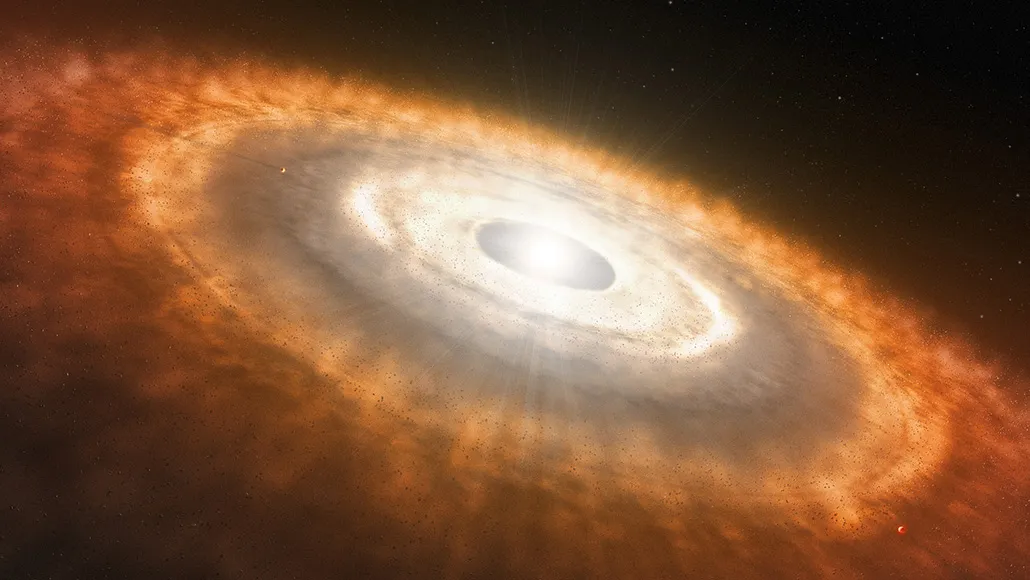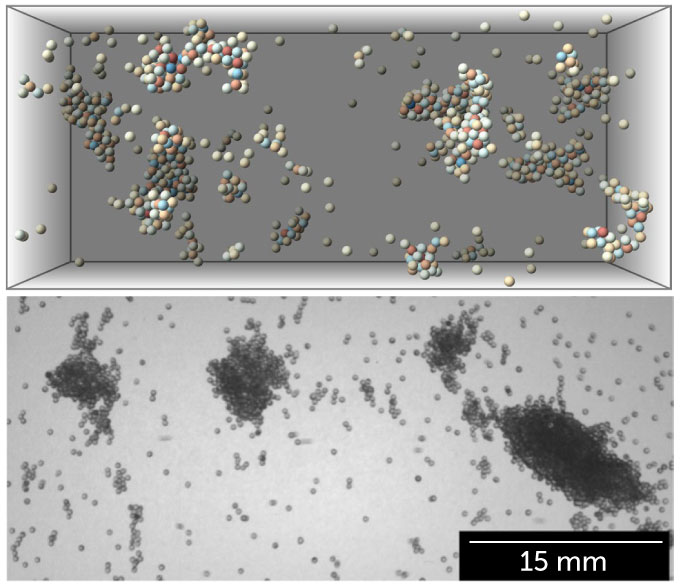
Planets get their start when dust particles clump together in a protoplanetary disk around a young star (illustrated). An experiment shows that electric charges may build up on these particles, helping clumps grow.
L. Calçada/ESO
- More than 2 years ago
Read another version of this article at Science News Explores
Growing up is hard to do, especially for baby planets. Now, scientists may have uncovered the solution to one puzzle about protoplanetary growing pains.
An obstacle to planetary formation, known as the bouncing barrier, hinders the clumping of dust particles that eventually form planets. But electric charge can provide extra stickiness that those cosmic motes need for clumps to keep growing, scientists report December 9 in Nature Physics. Testing that explanation required vigorously shaking thousands of small glass beads and catapulting them more than 100 meters skyward in an attempt to mimic planets’ birthplaces, protoplanetary disks.
In the pancakes of dust and gas known as protoplanetary disks, the seeds of planets collide and stick, forming larger and larger clumps. But, according to experiments and simulations, once particles are a millimeter or so in size, their growth stalls as they bounce off one another, rather than sticking. It’s a quandary that has stymied attempts to simulate how planets form.
Somehow, the dust particles overcome the bouncing barrier, resulting in a cosmos peppered with a wide variety of worlds (SN: 1/8/19). “We see exoplanets, so there must be a way to get bigger particles,” says experimental astrophysicist Tobias Steinpilz of the University of Duisburg-Essen in Germany.
So Steinpilz and colleagues set out to form analogs of planetary seeds. Instead of protoplanetary dust grains, the researchers used glass beads, each a bit less than half a millimeter in diameter. Collisions between those beads would mimic colliding dust particles in the protoplanetary disk. But there was one catch: Earth’s gravity. “That overpowers everything we want to see,” Steinpilz says.

So the researchers launched their experiment with a catapult inside the 120-meter-tall Bremen Drop Tower in Germany, letting the apparatus containing the beads, a camera and other measurement equipment, fly upward and back down. During its approximately nine-second flight, the device was effectively weightless.
Prior to the launch, the researchers shook the beads, mimicking the collisions that particles in a protoplanetary disk would experience over time. That movement caused the beads to build up electric charges, some negative and some positive. When the beads went weightless, they formed clumps — some consisting of over a thousand beads — thanks to electric forces between the charged beads, the researchers determined.
The results “clearly show that electrostatic forces help grow beyond the bouncing barrier in lab conditions,” says astronomer Richard Booth of the University of Cambridge. But, he notes, “there is a question of trying to extrapolate these lab conditions to what we see in protoplanetary disks.” In particular, protoplanetary disks consist of dust grains made of natural materials rather than glass.
Steinpilz’s team also performed shaking experiments with basalt spheres, which are more similar to the particles in a real protoplanetary disk. Basalt particles charged up even more than the glass beads, the team found, suggesting that the effect might be even stronger in protoplanetary disks.
Other barriers remain for developing planets, though. High-speed particles, for example, can collide and break larger clumps apart, so growing up still takes grit.







